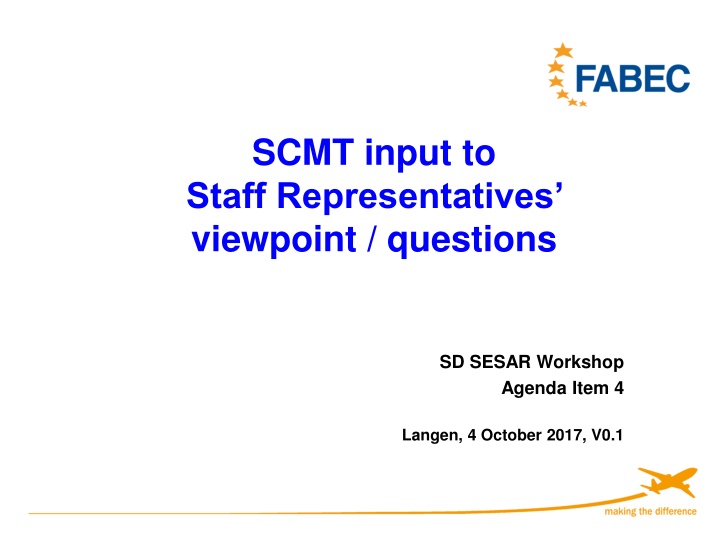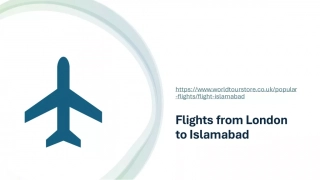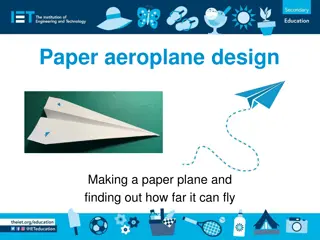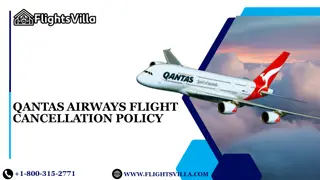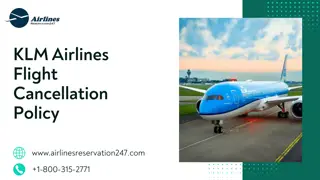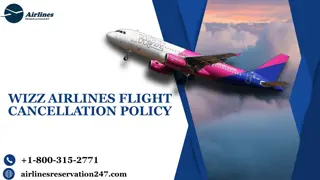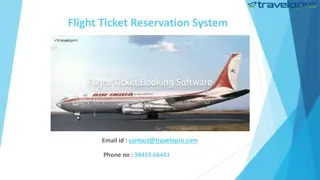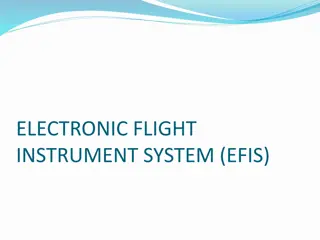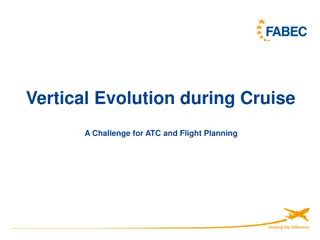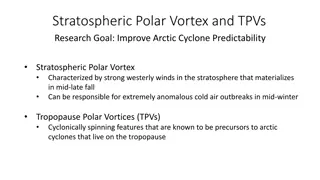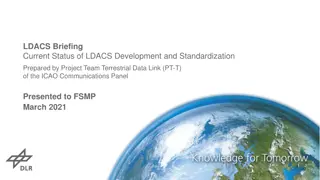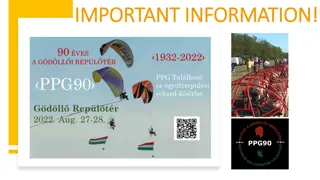Improvement of Flight Predictability with SESAR Solutions
Flight predictability is enhanced with SESAR solutions focusing on trajectory information sharing, 4D systems, and better FMS utilization. SESAR's involvement in coordination efforts and strategic development projects is crucial for the future of air traffic management. The integration of advanced technologies and collaborative approaches ensures efficient and safe operations within the aviation industry.
Download Presentation

Please find below an Image/Link to download the presentation.
The content on the website is provided AS IS for your information and personal use only. It may not be sold, licensed, or shared on other websites without obtaining consent from the author.If you encounter any issues during the download, it is possible that the publisher has removed the file from their server.
You are allowed to download the files provided on this website for personal or commercial use, subject to the condition that they are used lawfully. All files are the property of their respective owners.
The content on the website is provided AS IS for your information and personal use only. It may not be sold, licensed, or shared on other websites without obtaining consent from the author.
E N D
Presentation Transcript
SCMT input to Staff Representatives viewpoint / questions SD SESAR Workshop Agenda Item 4 Langen, 4 October 2017, V0.1
Staff representation in SESAR SCMT shares its information openly and transparently with SR SCMT appreciates input from SR ACCs and their staff involved in the deployment of XMAN and FRA projects. SCMT has no influence in SJU s and SDM s autonomous decision on SR participation 1 SD SESAR Workshop_Agenda Item 4_SR viewpoint, 4 October 2017
Improvement of the Flight Predictability with SESAR solutions AF #6 Initial Trajectory Information Sharing: Initial 4D: ground systems (2022-2023) and airborne systems (2025): better use of FMS information. IOP: will improve the information exchange between centres and replace the current OLDI methodology (2025). ATM Functionality Sub-AF4.3: Calculated Take-off Time to Target Times for ATFCM purposes: this will lead to better adherence to the flight plan (2021-2022). 2 SD SESAR Workshop_Agenda Item 4_SR viewpoint, 4 October 2017
SCMT involvement in SESAR 2020 FABEC coordination for SESAR2020 call for projects SESAR Committee coordinated the participation to the SJU Call For Projects in view of the SESAR2020 R&D projects selection. SCMT strategy on SESAR development Validation projects, Large Scale Demonstration projects coordinated by SJU Exchange of information on the SJU projects Where appropriate coordination between FABEC partners 3 SD SESAR Workshop_Agenda Item 4_SR viewpoint, 4 October 2017
SESAR 2020 FABEC ANSPs participation (1/2) DFS DSNA Skyguide MUAC Project Project Name Subproject PJ.01-01 Subproject Description Extended Arrival Management with overlapping AMAN operations and interaction with DCB Use of Arrival and Departure Management Information for Traffic Optimisation within the TMA Dynamic and Enhanced Routes and Airspace ASAS Spacing with more complex geometry Enhanced Rotorcraft and GA operations in the TMA Approach Improvement through Assisted Visual Separation Wake Turbulence Separations Optimisation Enhanced arrival procedures Minimum-Pair separations based on RSP Independent Rotorcraft and GA IFR operations at the Airport Improved access into small airports in low visibility conditions Traffic optimisation on single and multiple runway airports Enhanced Terminal Area for efficient curved operation Enhanced Guidance Assistance to Aircraft on the Airport Surface Combined with Routing Enhanced navigation and accuracy in LVC on the airport surface Enhanced Visual Operations Surface operations by RPAS Enhanced Airport Safety Nets for Controllers Conformance monitoring safety net for Pilots Traffic alerts for Pilots for airport operations Safety support tools for runway excursions Enhanced Collaborative Airport Performance Planning and Monitoring Enhanced Collaborative Airport Performance Management Remotely Provided Air Traffic Service for Multiple Aerodromes Remotely Provided Air Traffic Services from a Remote Tower Centre with a flexible allocation of aerodromes to Remote Tower Modules Optimized traffic management to enable Free Routing in high and very high complexity environments Management of Performance Based Free Routing in Lower Airspace OAUO for Commercial Aviation AU Fleet Prioritization and Preferences (UDPP) OAUO for Military Management of Dynamic Airspace configurations Dynamic Mobile Areas (DMA) of type 3 (Wave 2) C C PJ.01-02 C Enhanced Arrivals and Departures PJ01 PJ.01-03 PJ.01-05 PJ.01-06 PJ.01-07 PJ.02-01: PJ.02-02 PJ.02-03 PJ.02-05 PJ.02-06 PJ.02-08 PJ.02-11 PJ.03a-01 C C C C Increased Runway and Airport Throughput PJ02 C C Integrated Surface Management PJ.03a-03 PJ.03a-04 PJ.03a-09 PJ.03b-01 PJ.03b-03 PJ.03b-05 PJ.03b-06 PJ.04-01 PJ.04-02 PJ.05-02 PJ.05-03 PJ03a C LEAD PJ03b Airport Safety Nets LEAD Total Airport Management PJ04 Remote Tower for Multiple Airports PJ05 LEAD PJ.06-01 LEAD C Trajectory Based Free Routing PJ06 PJ.06-02 PJ.07-01 PJ.07-02 PJ.07-03 PJ.08-01 PJ.08-02 C Optimised Airspace Users Operations - UDPP PJ07 c c Advanced Airspace Management PJ08 4 SD SESAR Workshop_Agenda Item 4_SR viewpoint, 4 October 2017
SESAR 2020 FABEC ANSPs participation (2/2) DFS DSNA Skyguide MUAC Project Project Name Subproject PJ.09-01 PJ.09-02 PJ.09-03 PJ.10-01a PJ.10-01b PJ.10-01c PJ10-02A PJ10-02B PJ10-05 PJ.10-06 PJ.11-G1 Subproject Description Network Prediction and performance Integrated Local DCB Processes Collaborative Network Management Functions High Productivity Controller Team Organisation Flight Centric ATC Collaborative Control Improved Performance in the Provision of Separation Advanced Separation Management Autonomous separation assurance system for manned and unmanned plane Generic' (non-geographical) Controller Validations Enhanced Ground-based Safety Nets adapted to future operations (covers former PJ11-01,02,05,06) Enhanced Airborne Collision Avoidance for Commercial Air Transport normal operations ACAS Xa Airborne Collision Avoidance for Remotely Piloted Aircraft Systems - ACAS Xo ACAS for Commercial Air Transport specific operations ACAS Xu Airborne Collision Avoidance for General Aviation and Rotorcraft ACAS Xp Sub-regional Demand Capacity Balancing Service XMAN Delay Sharing Service Trajectory Prediction Service Data Centre Service for Virtual Centres Static Aeronautical Data Service Aeronautical Digital Map Service Workstation, Service Interface Definition & Virtual Centre Concept Workstation, Controller productivity SWIM Technical Infrastructure (Profiles) SWIM G/G Civil Military Interoperability SWIM TI Common runtime registry Mission Trajectories Integration of trajectory management processes in planning and execution Management and sharing of data used in trajectory (AIM, METEO) Performance Based Trajectory Prediction ATM operations & systems ATM services & systems Performance management Support and Evolution of the Content Development Framework C C C PJ09 Advanced DCB C LEAD C C C Separation Management in en route and TMA C C C LEAD C C PJ10 C C C PJ.11-A1 LEAD Enhanced Air and Ground Safety Nets PJ11 PJ.11-A2 C PJ.11-A3 PJ.11-A4 PJ.15-01 PJ.15-02 PJ.15-08 PJ.15-09 PJ.15-10 PJ.15-11 PJ.16-03 PJ.16-04 PJ.17-01 PJ.17-03 PJ.17-08 PJ.18-01 PJ.18-02 PJ.18-04 PJ.18-06 PJ.19-CI01 PJ.19-CI02 PJ.19-CI03 PJ.19-CI04 C LEAD C C C PJ15 Common Services C C C C C C C C PJ16 CWP-HMI PJ17 SWIM Infrastructures C C C C C C C C C C C 4D Trajectory Management PJ18 LEAD C C C C C ATM Design and Architecture PJ19 PJ20 ATM Master Plan C C 5 SD SESAR Workshop_Agenda Item 4_SR viewpoint, 4 October 2017
PJ05 Remote Tower for Multiple Airports Scope and Objectives Objectives ATCO / AFISO can be responsible for more than one airport simultaneously Scope 5.2 Remote Tower Module provides Air Traffic Service for Multiple Aerodromes 5.3 Remote Tower Modules provide Air Traffic Services from a Remote Tower Centre with a flexible allocation of aerodromes 6 SD SESAR Workshop_Agenda Item 4_SR viewpoint, 4 October 2017
PJ15.09 Data centre Service for Virtual Centres Scope and Objectives Objectives The Virtual Centre Service provides Air Traffic Services (mainly ER and APP) within a volume of airspace which is the sum of the airspace areas previously covered by distinct Air Traffic Service Units (ATSUs) Scope Standardised workstations for controllers, which are located at the Virtual Centre, by using open systems and certified and "pluggable" applications5.3 Remote Tower Modules provide Air Traffic Services from a Remote Tower Centre with a flexible allocation of aerodromes Data and information service providers offering security protected contents Common standardised interfaces between the workstation and the systems providing data inputs 7 SD SESAR Workshop_Agenda Item 4_SR viewpoint, 4 October 2017
PJ10 Data centre Service for Virtual Centres Scope and Objectives 10-01a: Multi sector planner 1 P for n E 10-01b: Flight Centric ATC a controller is no longer in charge of managing the entire traffic within a given sector. Instead, he is now responsible for a certain number of aircraft throughout their flight segment within a given airspace whereas other controllers are responsible for a certain number of different aircraft within the same airspace 10-01c: Collaborative Control co-ordination by exception rather than co-ordination by procedure 8 SD SESAR Workshop_Agenda Item 4_SR viewpoint, 4 October 2017
PJ16.03 Workstation, Service Interface Definition & Virtual Centre Concept Scope and Objectives Objectives This first virtual centre solution shall be developed such that it supports ATM operations in line with the SESAR developed solution Scope Workstation, Service Interface Definition Ground service oriented/open standardised technical architecture 9 SD SESAR Workshop_Agenda Item 4_SR viewpoint, 4 October 2017
SCMT not directly involved in: Non-geographical sectorisation Drones Cybersecurity FIS-B 10 SD SESAR Workshop_Agenda Item 4_SR viewpoint, 4 October 2017
SESAR Solution Project PJ.14-02-05 : Development of new services similar to FIS-B to support ADS-B solutions for General Aviation (1/2) ADS-B, which consists of two different services, "ADS-B Out" and "ADS-B In", could complement radar as a surveillance method for controlling aircraft worldwide. It is already mandated in US (incl. GA) and in Europe. ADS-B enhances safety by making an aircraft visible, real time, to air traffic control (ATC) and to other appropriately equipped ADS-B aircraft. According to the European mandate 1207/2011 (incl. amendments by 1028/2014) all aircraft with a maximum certified take-off mass exceeding 5,700 kg or having a maximum cruising true airspeed capability greater than 250 knots have to be equipped with Mode S ES ADS-B until 2020. General Aviation (GA) aircraft in Europe are not affected by this mandate; an extension of the current mandate is being discussed with unclear outcome. Some countries in Europe have already mandated carrying Mode S transponders while flying within their airspace of responsibility. Amongst other benefits this also enables TCAS equipped aircraft to identify these airspace users when the aircraft is in close proximity as intruders. Thus, ADS-B In/Out also bears benefits for GA as they would be integrated in the same surveillance and safety layer as commercial aircraft. The equipage and operation of GA aircraft with Mode S ES ADS-B transceiver in Europe will significantly increase the safety level in European airspace. This development is intended to encourage GA to install and use "ADS-B Out" and "ADS B In" by providing new services. The proposed solution will avoid the installation of a cost intensive second and third layer of ADS-B ground infrastructure (i.e. UAT and ADS-R) by Air Navigation Service Providers (ANSPs) in Europe as they have in US whilst increasing the safety level and reducing effort and costs of Flight Information Services. Thus, supporting operational performance and safety whilst providing a benefit to cost effectiveness of the ANSPs ground infrastructure. 11 SD SESAR Workshop_Agenda Item 4_SR viewpoint, 4 October 2017
SESAR Solution Project PJ.14-02-05 : Development of new services similar to FIS-B to support ADS-B solutions for General Aviation (2/2) This activity foresees two possible solutions dependent on the operational environment to be deployed in: 1. Delivery of TIS-B and FIS-B for GA via existing infrastructure (ADS-B ground stations and WAM /MLAT systems) to either existing SSR transponders or ADS-B In devices on-board the aircraft. However, in order to provide additional services like FIS-B the 1090 MHz frequency seems to be not always the optimal choice, because of the required bandwidth of these services on the one hand and dependent on the amount of traffic causing limited capacity of the Mode S ES radio frequency on the other hand. For those areas where neither the 1030MHz nor the 1090MHz Data link would achieve the required performance due to spectrum congestion the following solution (#2) is proposed. 2. Delivery of new services similar to FIS-B for GA via a different, already existing and modern communication infrastructure, namely cellular mobile telephony. Data transfer standards like UMTS and LTE could provide sufficient bandwidth to enable the on-board display of e.g. graphical weather data and information on the utilization of restricted airspace. The ground infrastructure provides the data to the user via website access. The on-board solution could be APP-based on devices like smartphones or tablet computers. An expensive integrated display is not necessary and reliefs aircraft owners of additional costs whilst ensuring a safe operational environment to GA, commercial aircraft and ATC. 12 SD SESAR Workshop_Agenda Item 4_SR viewpoint, 4 October 2017
CBA in PCP Was done by SJU FABEC has no access to details, only results were given Content of PCP and later CP2 not decided on basis of CBA AFs of PCP and later CP2 become mandatory for ANSPs 13 SD SESAR Workshop_Agenda Item 4_SR viewpoint, 4 October 2017
SCMT analyzed the 8 proposed Centralized Services and made a recommendation for NMB (May 2017) CS1: Flight Plan and Airport Slot Consistency Service (FAS): FABEC supports CS1 although the FABEC ANSPs are no prime users of this service. Prime users of the service to decide if they need the service. CS4: Advanced Flexible Use of Airspace (AFUAS Support Service): FABEC supports CS4. CS6-2: Management of Common Network Resources Service (CNR)/ Mode S Interrogator Code Allocation MICA: FABEC supports CS6-2. NFIR to be uplifted for this service. CS6-3: Management of Common Network Resources Service (CNR)/ Radio Frequency Function (RFF): FABEC supports CS6-3. CS6-6: Management of Common Network Resources Service (CNR)/ Security Certificate Service (SCS): FABEC supports CS6-6. NFIR to be uplifted for this service. CS6-7: Management of Common Network Resources Service (CNR)/ Operation and Coordination of Network Security (OCNS): FABEC supports CS6-7. NFIR to be uplifted for this service. D-SOC services provided to other stakeholders than NM to be delivered on a UPP basis. CS7-2: Network Infrastructure Performance monitoring and analysis Service (NIPS); the Performance of 1030/1090 RF bands (SUR-RF): FABEC supports CS7-2. NFIR to be uplifted for this service. CS7-3: Network Infrastructure Performance monitoring and analysis Service (NIPS); the monitoring and prediction of satellite navigation (SAT- NAV): FABEC does not support the full scope of CS7-3. Part I of the proposed service: If NM needs to upgrade its existing system (AUGUR) that provides RAIM availability prediction to stakeholders then this could be done. Part II of the proposed service: FABEC does not support the creation of a new centralised service for monitoring and recording of GPS constellations . This information is available without a centralised service and the added value of creating a (new) centralised service is questioned. FABEC cannot back the CBA that was developed for this part of the service. 14 SD SESAR Workshop_Agenda Item 4_SR viewpoint, 4 October 2017
